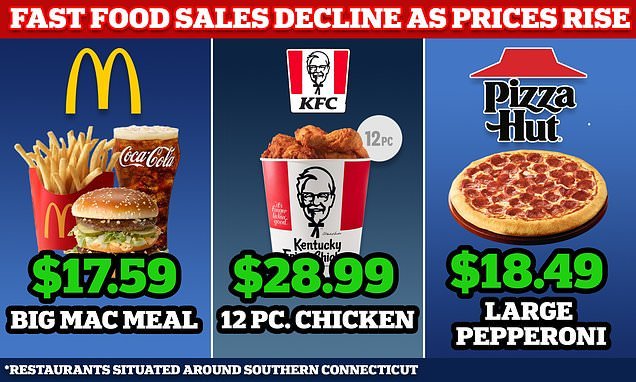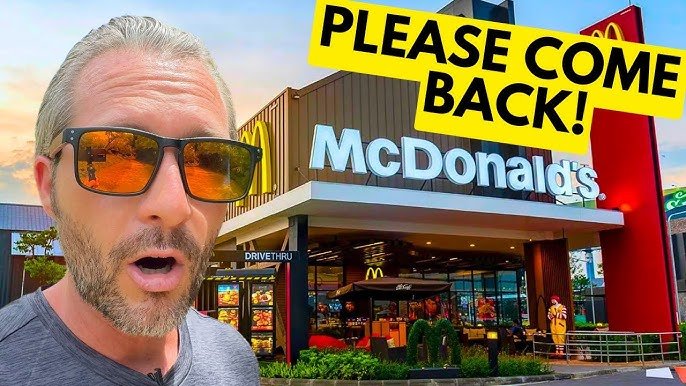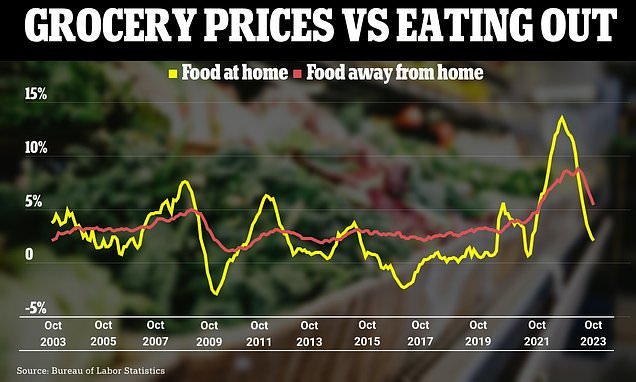Fast Food Customers HAVE HAD ENOUGH OF THE HIGH PRICES!
Have you noticed the rising prices at your favorite fast food restaurants? It seems like even the most dedicated fast food enthusiasts are cutting back on their visits due to the steep increase in prices. This trend could have a significant impact on the economy, as fast food chains struggle to stay afloat in the face of financial strain. With California passing a $20 per hour minimum wage for fast food workers and prices for fast food rising more than usual due to inflation, customers are rethinking their fast food purchases.
As customers grapple with the high prices and potential layoffs in the fast food industry, it’s becoming clear that the impact could be far-reaching. For truckers relying on fast food options during long-haul trips, the rising costs are making it increasingly difficult to find affordable meals on the road. While some are turning to sit-down restaurants as alternatives, others are seeking out deals and specials to make their fast food purchases more manageable. Ultimately, as prices continue to climb, customers are being forced to reconsider their fast food habits in the face of economic challenges.

Overview of High Prices in Fast Food Industry
As customers are cutting back on visits to fast food restaurants due to high prices, the industry is facing challenges in terms of pricing and practices. The prices of fast food items have been increasing more than usual, especially with the current inflation rates. This trend is concerning for both consumers and businesses within the industry.
Impact on Economy
The fast food industry plays a significant role in the economy, and as fast food chains struggle to stay in business, there are predictions of layoffs and reduced hours for fast food workers. California’s recent passing of a $20 per hour minimum wage for fast food workers has also added to the challenges faced by the industry. These factors collectively highlight the impact of high prices within the fast food sector.
Response from Customers
In response to high prices, customers are refusing to pay premium rates for fast food items. Many individuals are shifting towards healthier and more affordable alternatives, leading to an overall decrease in fast food consumption. This change in consumer behavior is influencing the industry’s dynamics and pushing fast food chains to reconsider their pricing strategies.
Struggles of Fast Food Chains
The financial strain on fast food chains due to rising prices is evident, prompting them to make efforts to attract customers through promotions and discounts. These chains are exploring cost-cutting measures to remain competitive and sustainable in the face of escalating prices. The need for innovative solutions to address these challenges is becoming more urgent for fast food businesses.

Government Policies and Regulations
California’s minimum wage increase has directly impacted the fast food industry, raising concerns about operational costs and profitability. Calls for stricter regulations on fast food pricing have emerged, sparking debates on the level of government intervention required to manage pricing within the industry. The regulatory landscape is evolving, posing additional challenges to fast food businesses.
Possible Solutions to High Prices
To combat the issue of high prices in the fast food industry, stakeholders are considering reevaluating pricing strategies to strike a balance between affordability and profitability. Improving operational efficiency to lower costs and exploring partnerships with suppliers for better pricing are among the strategies being explored. These potential solutions aim to address the root causes of high prices and create a sustainable pricing model for the industry.

Consumer Advocacy and Awareness
Consumer advocacy efforts are focusing on educating the public about the true cost of fast food and encouraging transparency in pricing practices. Initiatives that promote fair pricing in the fast food industry are gaining support from consumers who seek affordable and ethical food options. The role of consumer awareness in driving change within the industry is crucial for fostering a more balanced pricing structure.
Role of Social Media and Technology
Social media platforms are being utilized to raise awareness about high prices in the fast food industry and to empower consumers to make informed decisions. Technology is playing a key role in enabling consumers to compare prices and seek out alternative dining options. Online platforms dedicated to sharing experiences and feedback on fast food pricing are facilitating a more transparent dialogue between customers and businesses.

Future Outlook for Fast Food Industry
As the fast food industry navigates the challenges of high prices, there is a need for adaptation to changing consumer preferences and economic conditions. The potential for innovation in pricing models to address affordability concerns and sustain business operations is becoming increasingly apparent. Collaboration among stakeholders is essential to address pricing issues and ensure the long-term viability of the fast food sector.
Conclusion
The high prices in the fast food industry are presenting significant challenges for both customers and businesses. Recognizing the impact of these pricing issues on the economy and society, it is crucial to take meaningful actions to address the root causes of high prices. Finding a balance between affordability and sustainability is paramount for ensuring the continued success of the fast food industry. By fostering transparency, innovation, and collaboration, stakeholders can work together to create a more equitable and resilient pricing structure for the future.




